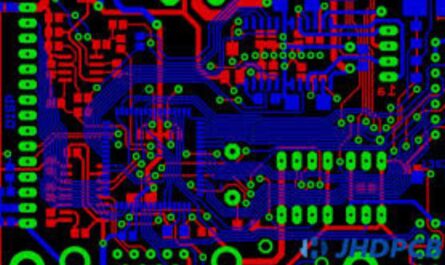
Introduction to Laser Automation
Laser automation utilizes lasers in an automated manufacturing process to cut, weld, mark and perform various other operations with high precision and efficiency. Lasers allow for contactless and flexible operations at the micro and macro levels. When integrated with automation technologies like robotics and machine vision systems, lasers enable lights-out manufacturing with minimal human intervention.
History and Applications of Industrial Lasers
The use of lasers in manufacturing first began in the 1960s when CO2 lasers were employed for cutting and welding tasks. Since then, lasers have drastically evolved and different types like solid-state, fiber and excimer lasers were developed for diverse applications. Today, laser technology powers a wide range of industrial automation solutions. Some key applications include laser cutting of sheet metal for automotive, aerospace and other metal fabrication industries. Lasers can cut virtually any material with minimal heat distortion. Welding of car bodies, medical devices and electronics components is another major area where precision laser welding systems are prevalent.
Laser marking is widely used for product identification, traceability and branding. This non-contact process leaves permanent marks on products without damage. The medical device industry heavily relies on laser marking for product coding. Laser ablation is a process which removes material using a laser beam. It finds use in micro manufacturing, prototyping and circuit editing. Applications also encompass laser drilling of printed circuit boards, micro via holes and shaped kerf cuts in non-metal materials. Emerging segments include laser polishing, additive manufacturing, solar cell manufacturing and laser incision of semiconductor wafers as well.
Role of Automation in Scaling Laser Operations
To leverage the full potential of lasers and make processes highly automated, efficient integration with industrial robots and machine vision is essential. Robots provide flexibility to perform laser jobs across multiple stations without retooling. They can handle a variety of parts randomly and streamline complex multi-step fabrication tasks. Using robots to precisely position laser tools and parts enables lights-out operation.
Vision systems aid in part recognition, guidance, quality checks and process monitoring. Integrated machine vision identifies and locates features to direct lasers for processing. It inspects cut or marked parts to flag defects. Analytics from vision feedback helps optimize parameters. Automating pre- and post- processing tasks like part loading/unloading, fixturing and cleaning further boosts productivity. Advanced software seamlessly coordinates all elements for a fully automated laser cell.
Manufacturers are also automating programming and setup. Features like teach-and-repeat, pattern recognition, nesting algorithms and online programming tools simplify programming of laser jobs and producenesting patterns for sheet metal cutting. Automation reduces skill requirements and lets operators easily make setup adjustments. This way, complex laser processes requiring high precision can be programmed in a fraction of the earlier time.
Digital Transformation with Lasers and Automation
The confluence of laser technology, robotics, artificial intelligence, machine learning, analytics, simulation and advanced connectivity is bringing about a digital transformation in manufacturing. The adoption of Industry 4.0 concepts and smart factory environments based on real-time data exchange is enabling unprecedented capabilities.
Connected smart lasers share operational data through an IIoT (Industrial Internet of Things) network. This data helps detect anomalies, predict failures and conduct remote diagnosis. Analytics yield insights into optimization opportunities. Computer vision and AI assist in automated defect detection, root cause analysis and corrective actions. Simulation accelerates prototyping and reduces physical trials. Virtual commissioning of automated laser cells allows validating workflows digitally before physical implementation. All these digital enablers minimize downtime and maximize system efficiency.
Smart factories house fully automated, digitally controlled laser operation modules or cells. Manufacturers achieve lights-out capability through synchronized scheduling of laser jobs across multiple cells based on demand. This demand-driven just-in-time production minimizes work-in-progress inventory and yields significant cost savings. The digital ecosystem provides end-to-end visibility and traceability from design and orders to shipping. Lasers thus act as the nexus of digitization and autonomous manufacturing.
Conclusion
In conclusion, Laser automation combined with automation has revolutionized processes across industries. Precise cutting, welding, surface modification and marking are accomplished seamlessly through smartly automated laser cells. The digitization of laser operations brings transformative Industry 4.0 benefits. Ongoing advancements will further optimize performance, enhance quality control and enable customized low-volume production. Laser automation will hence remain the preferred manufacturing method well into the future.
*Note:
- Source: Coherent Market Insights, Public sources, Desk research
- We have leveraged AI tools to mine information and compile it



